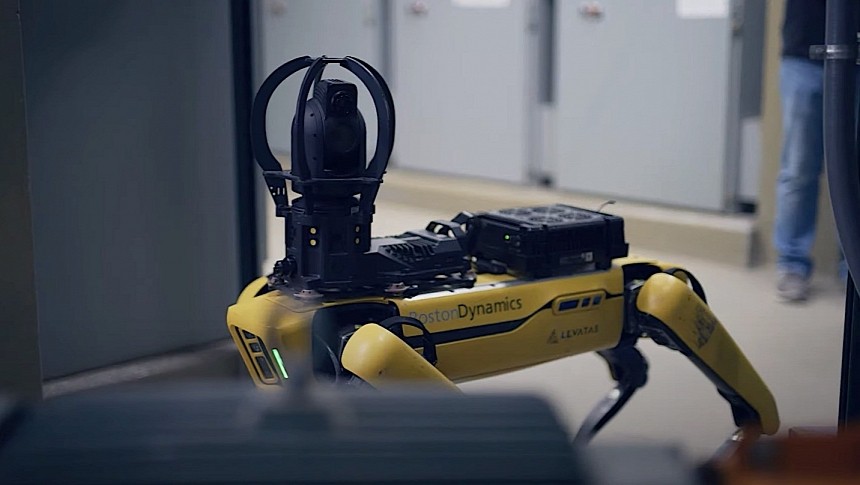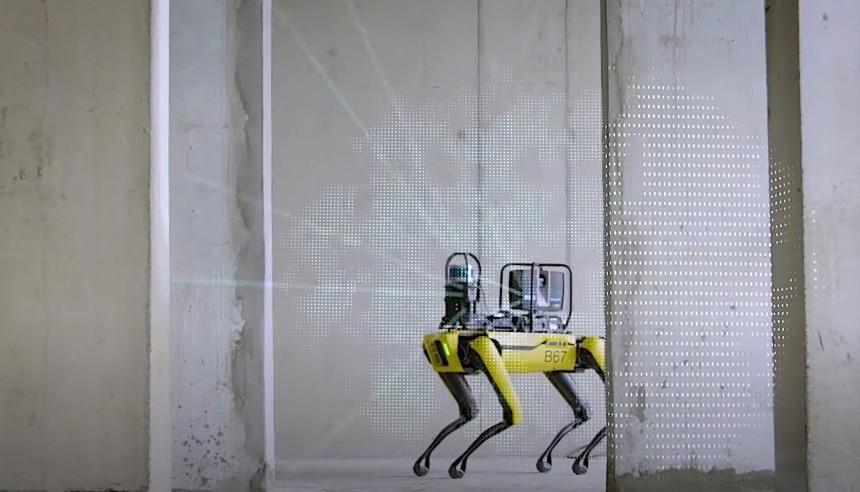Not long ago, for one reason or another, I made a statement here on autoevolution, essentially declaring that as long as AIs don't have physical bodies, there's nothing to be worried about. Well, guess what…?
The following story is about how two of the world's most popular technological advancements of our time, the Boston Dynamics Spot robot and the ChatGPT artificial intelligence chatbot, became one, not in small part, simply because they can.
The Spot dog-like robot has been around for a while now, even if it didn't become available for commercial applications until 2020. The $75,000 machine has been developed to be used by businesses and individuals for surveillance and inspection missions.
The robot can be controlled remotely or sent on its merry way autonomously, using programmed routes and tasks. That means it doesn't have an actual mind of its own, so it's unlikely it’ll start chasing people around with a knife.
OpenAI's ChatGPT is a bit younger, having been released in 2022, and is the exact opposite of Spot, namely a (sort of a) mind without a body of its own. Its main task is to come up with written replies to queries, and because of how it does that, it has been in the news for months now.
And it'll continue to be so, together with Spot, as the two have now become a single entity, which identifies itself as OpenAI (ask it that question, and you'll see).
The idea of giving the AI a robotic body (or the robotic body an AI mind) popped into the heads of the guys over at Levatas. That's a company that specializes in "machine learning and computer vision software for automating visual inspection."
Being in this business means they know how difficult it is to operate Spot. First, it needs to be programmed to do things, which requires a unique set of skills only few people have. Then, and perhaps more importantly, the data Spot captures through whatever hardware is fitted with while on missions is almost impossible to query easily and quickly.
And this is where ChatGPT comes in. Somehow, the people at Levatas uploaded it into Spot, tied it to a Google text-to-speech solution and voila, here is (probably) the world's first robot that uses an AI mind not specifically designed for it.
More specifically, Spot can now vocally answer questions about future or past missions, and it can also take commands and act on them. It, of course, does not make decisions on its own, for now, so other than the danger of talking its way into world domination, there's nothing horrifying about it.
A video of the robot in action was published this week, and you can have a look at it below. You should be aware though this is only the beginning, as we're promised “more is coming."
The Spot dog-like robot has been around for a while now, even if it didn't become available for commercial applications until 2020. The $75,000 machine has been developed to be used by businesses and individuals for surveillance and inspection missions.
The robot can be controlled remotely or sent on its merry way autonomously, using programmed routes and tasks. That means it doesn't have an actual mind of its own, so it's unlikely it’ll start chasing people around with a knife.
OpenAI's ChatGPT is a bit younger, having been released in 2022, and is the exact opposite of Spot, namely a (sort of a) mind without a body of its own. Its main task is to come up with written replies to queries, and because of how it does that, it has been in the news for months now.
The idea of giving the AI a robotic body (or the robotic body an AI mind) popped into the heads of the guys over at Levatas. That's a company that specializes in "machine learning and computer vision software for automating visual inspection."
Being in this business means they know how difficult it is to operate Spot. First, it needs to be programmed to do things, which requires a unique set of skills only few people have. Then, and perhaps more importantly, the data Spot captures through whatever hardware is fitted with while on missions is almost impossible to query easily and quickly.
And this is where ChatGPT comes in. Somehow, the people at Levatas uploaded it into Spot, tied it to a Google text-to-speech solution and voila, here is (probably) the world's first robot that uses an AI mind not specifically designed for it.
More specifically, Spot can now vocally answer questions about future or past missions, and it can also take commands and act on them. It, of course, does not make decisions on its own, for now, so other than the danger of talking its way into world domination, there's nothing horrifying about it.
A video of the robot in action was published this week, and you can have a look at it below. You should be aware though this is only the beginning, as we're promised “more is coming."
We integrated ChatGPT with our robots.
— Santiago (@svpino) April 25, 2023
We had a ton of fun building this!
Read on for the details: pic.twitter.com/DRC2AOF0eU












